CompTIA Security+ Certification
Controls and Security Concepts
Honey Pots
Welcome to this comprehensive lesson on honeypots and related cybersecurity technologies. In this guide, we dive into the world of honeypots, honeynets, honeyfiles, and honeytokens—vital tools in the cybersecurity arsenal designed to lure attackers, monitor their activities, and provide actionable intelligence. By understanding these concepts, organizations can enhance their threat detection capabilities and refine their security strategies.

Honeypots
Honeypots are decoy systems that mimic real servers, workstations, or network services. Their primary function is to attract attackers, enabling security teams to detect, analyze, and understand malicious activity. By deploying honeypots, organizations gain valuable insights into cyber threats and can reinforce their overall security posture.
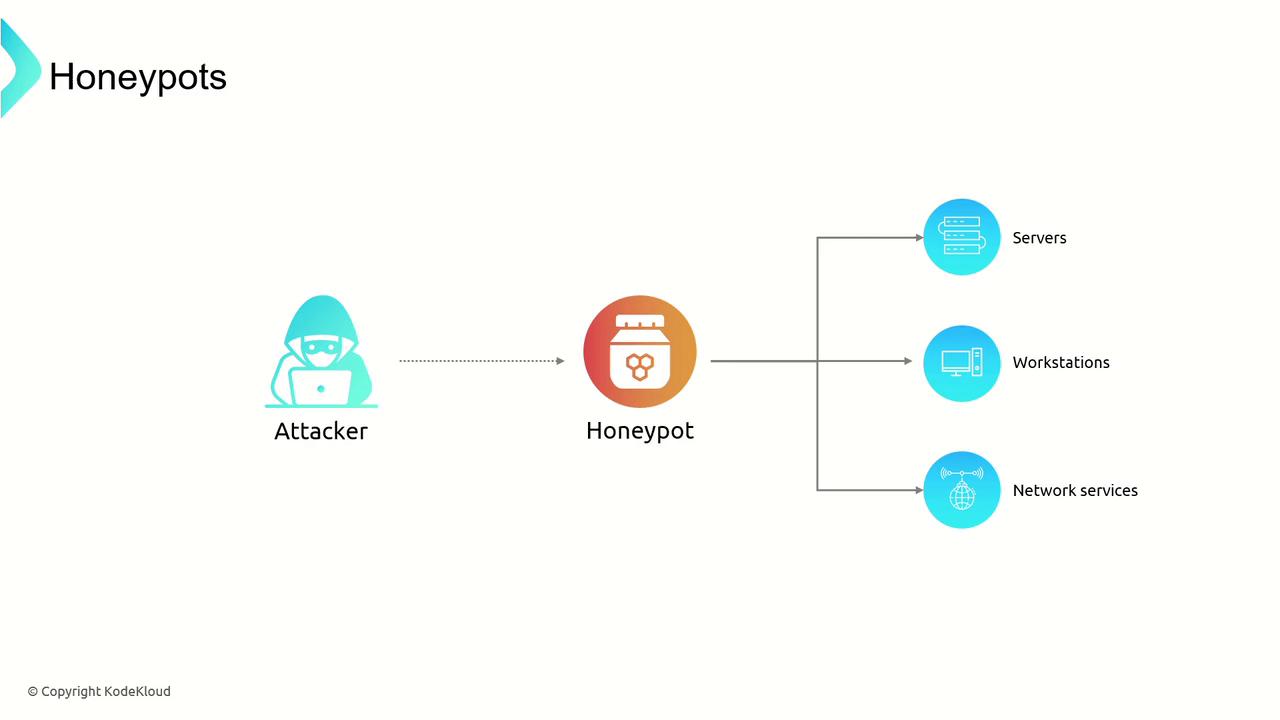
Honeynets
A honeynet takes the concept of a honeypot a step further by simulating an entire network environment. This realistic setup provides a holistic view of attacker behavior as they interact with multiple simulated systems, making it easier to observe complex attacks and trace intruder tactics.
How Honeynets Work
Honeynets are configured to replicate operational networks with a mix of devices, servers, and services. Every interaction—from network traffic and system commands to application-level events—is meticulously monitored and logged. This comprehensive data collection helps analysts decode attacker techniques, tactics, and procedures (TTPs), fueling the development of robust cybersecurity defenses.
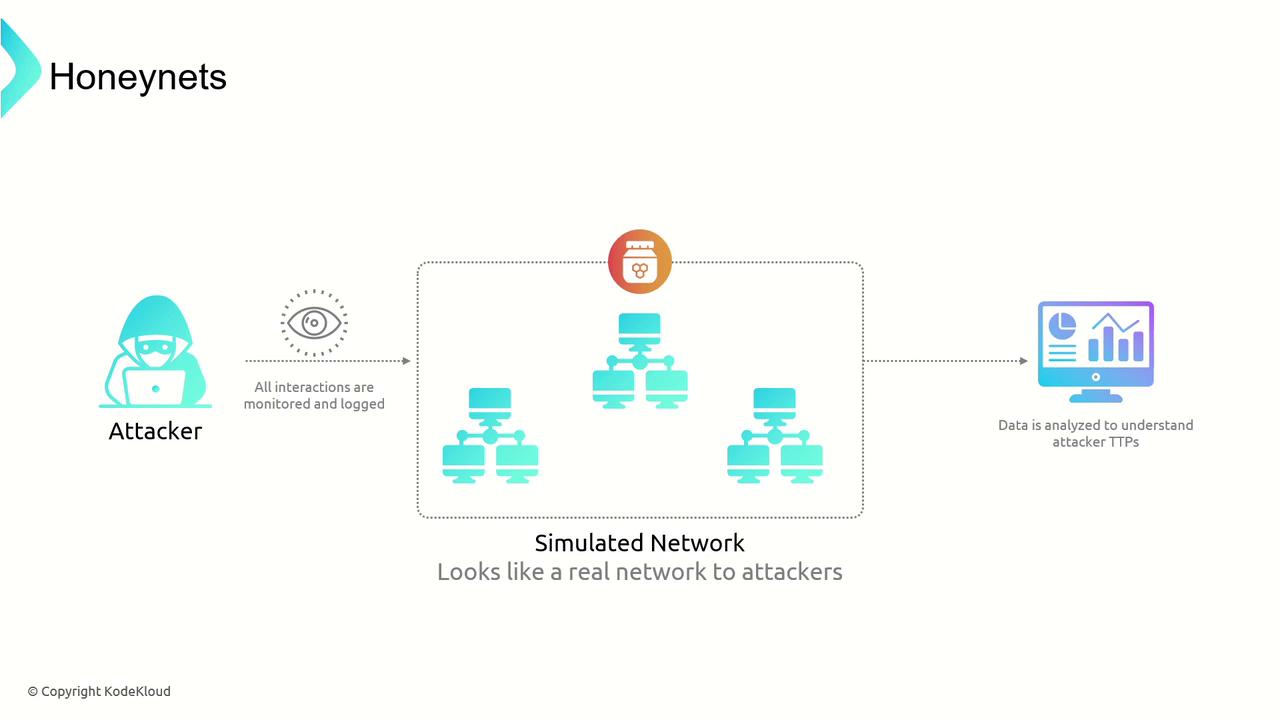
Honeynets bring several advantages, including:
- Comprehensive monitoring of network activities.
- Enhanced deception using realistic decoy systems.
- Valuable research opportunities for developing new defense strategies.
Note
Keep in mind that honeynets require significant management due to their complexity and resource needs. They must be carefully maintained to avoid detection by advanced attackers.
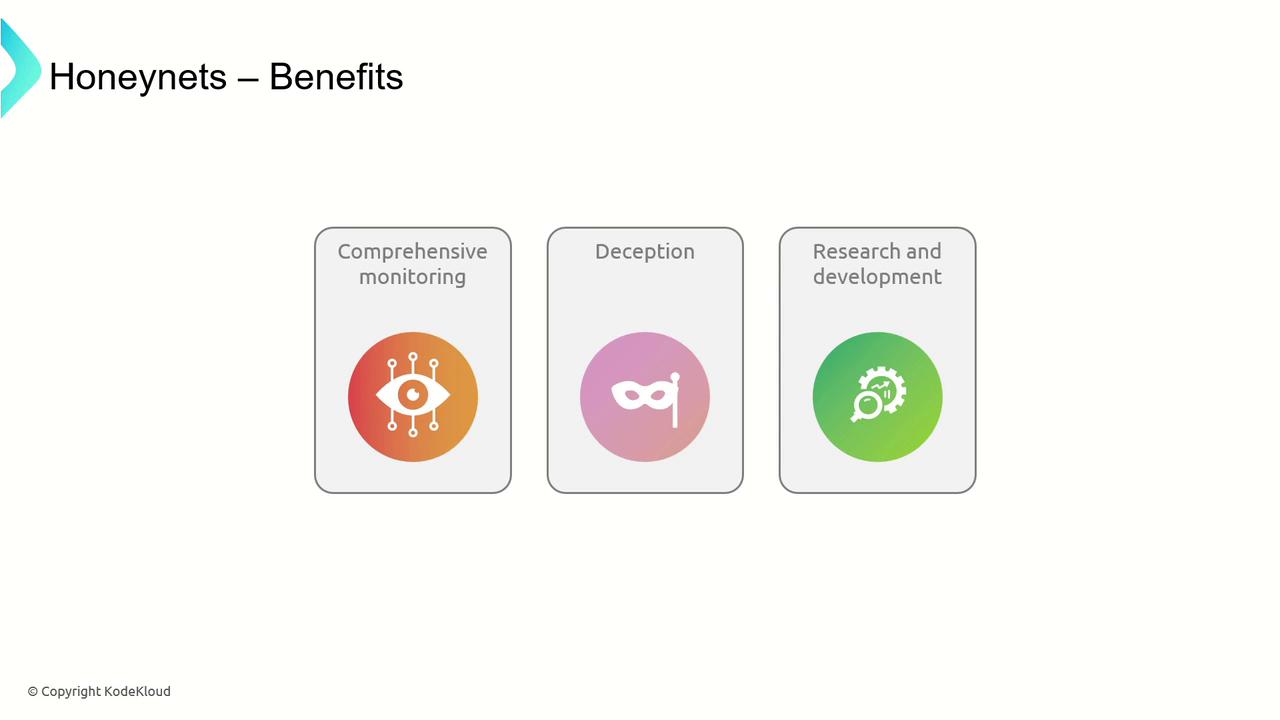
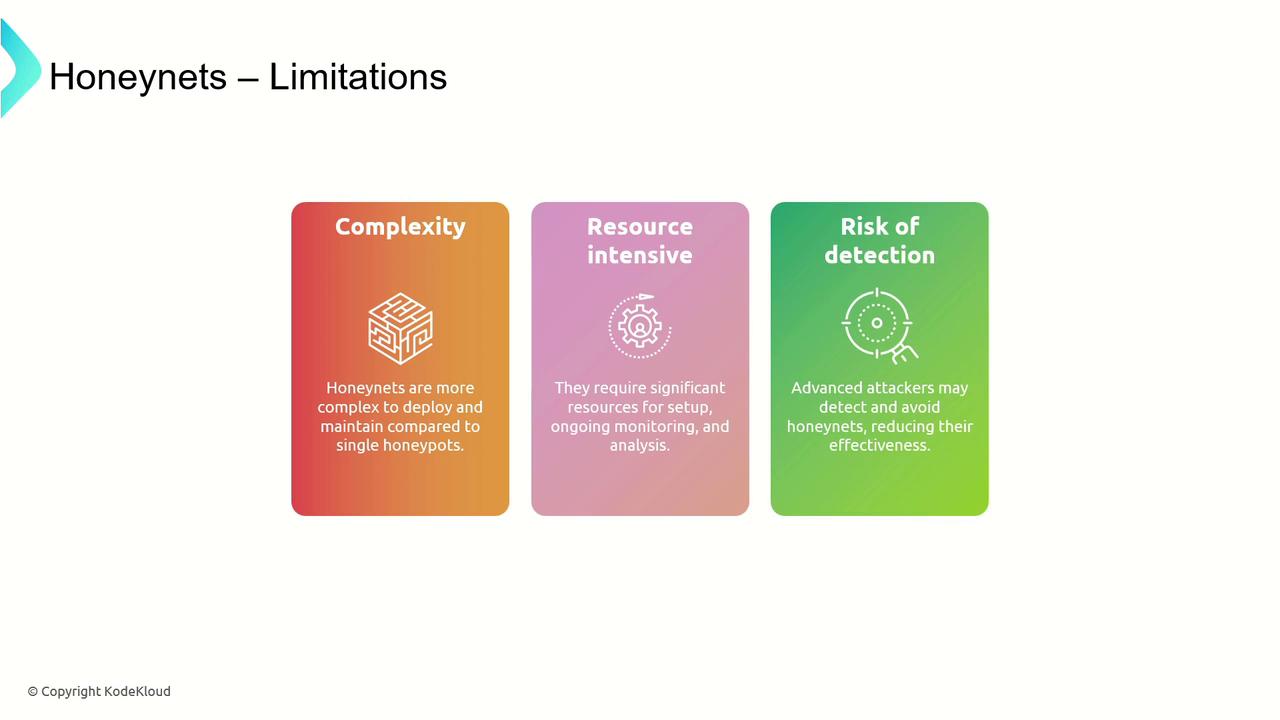
Honeyfiles
Honeyfiles are decoy files strategically placed within a file system to attract attackers by simulating valuable data. Any attempt to access, copy, or modify these files triggers alerts, helping security teams to identify and analyze unauthorized activities.
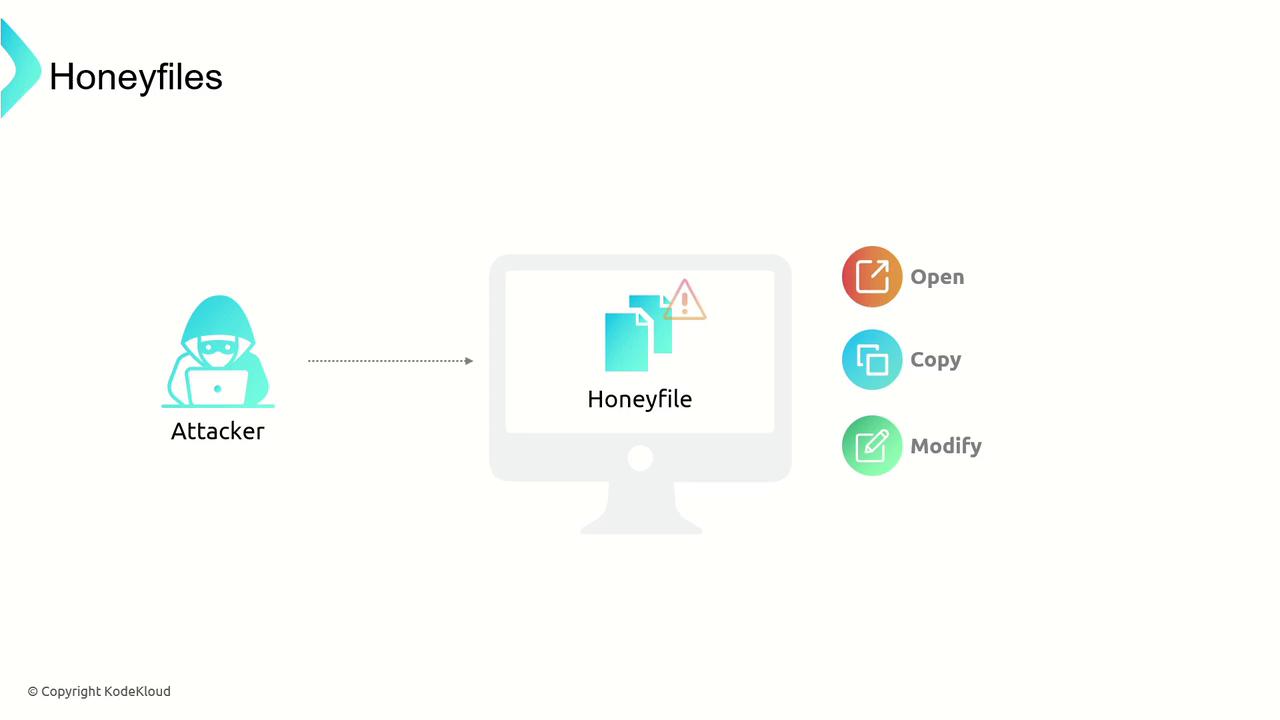
Key advantages of honeyfiles include low cost and ease of deployment. They are effective in detecting unauthorized access and misleading attackers into believing they have found sensitive data. However, honeyfiles have limitations in scope, and there is a risk of generating false positives if legitimate users inadvertently trigger alerts.
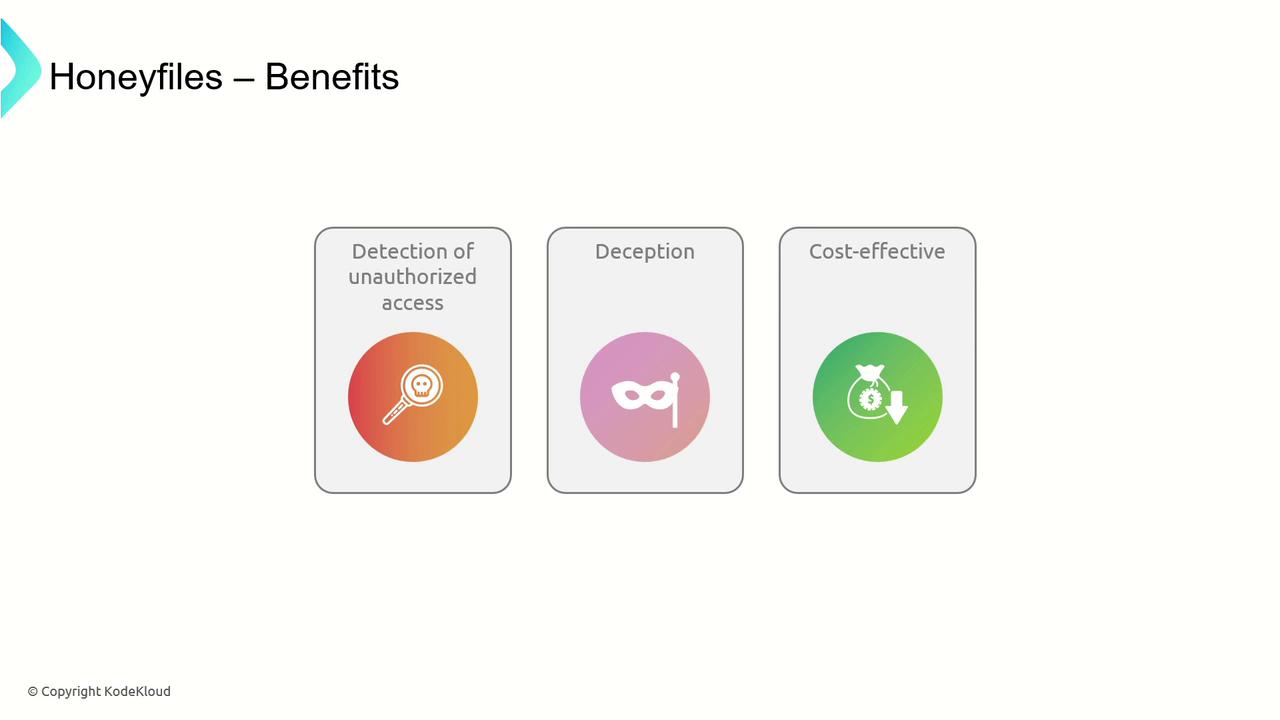
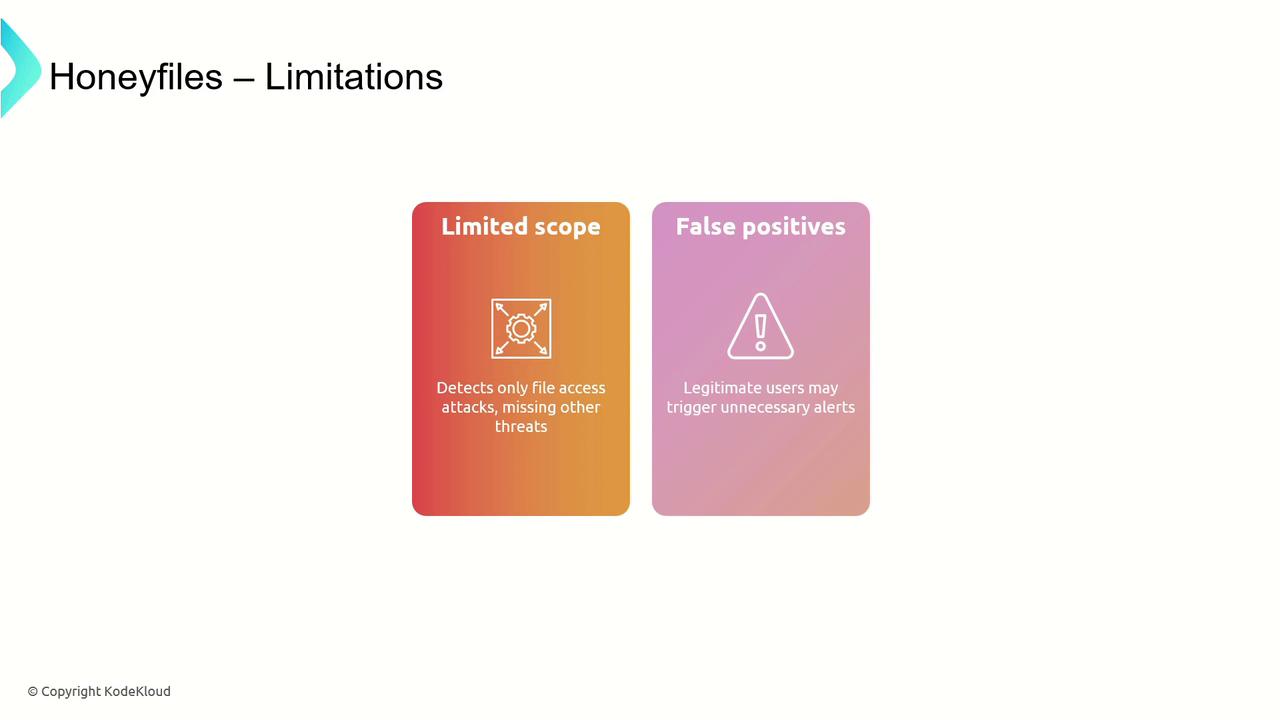
Honeytokens
Honeytokens are small decoy data elements—such as fake usernames, credentials, or records—integrated into databases or applications. Unlike complete files, these tokens offer granular interaction points that, when accessed or manipulated, raise immediate alerts. This helps determine both the attack vector and the attacker’s intent.
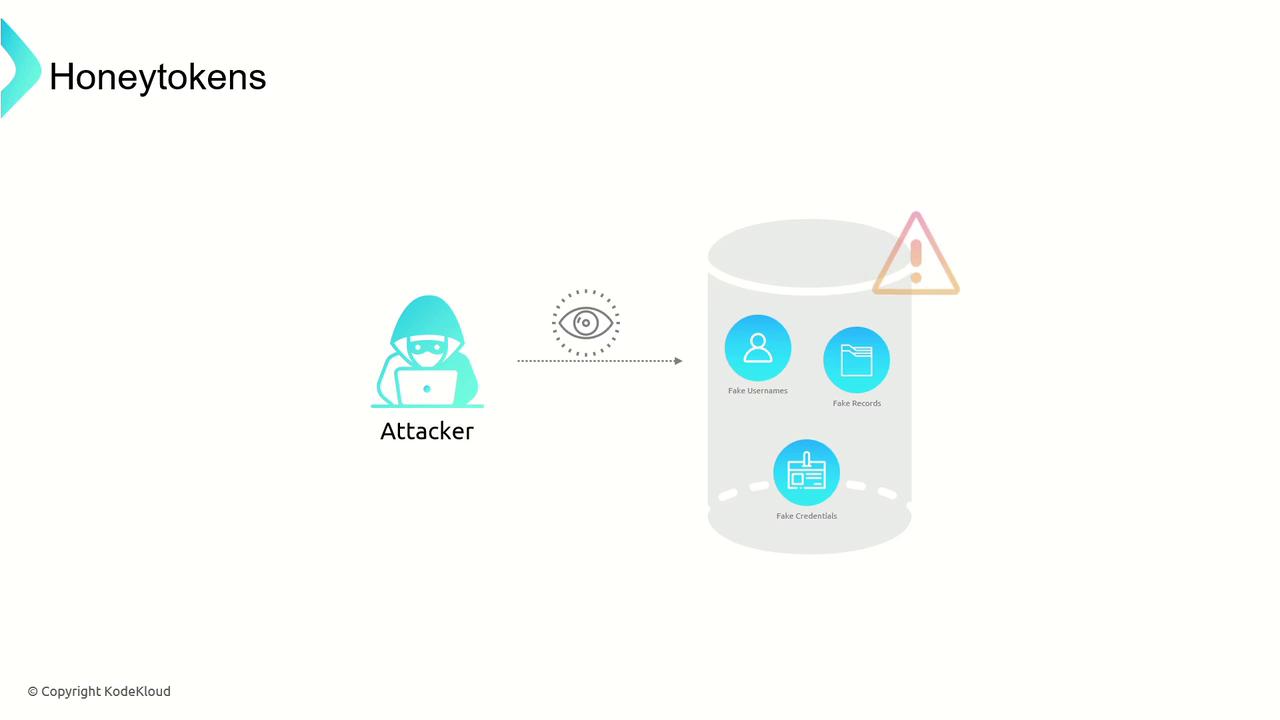
Benefits of honeytokens include:
- Versatility in deployment across various data stores.
- Effective detection of unauthorized activities with minimal performance impact.
- Ease of integration within existing systems.
However, sophisticated attackers might recognize and avoid these decoys, limiting their effectiveness to the specific data elements in which they are embedded.
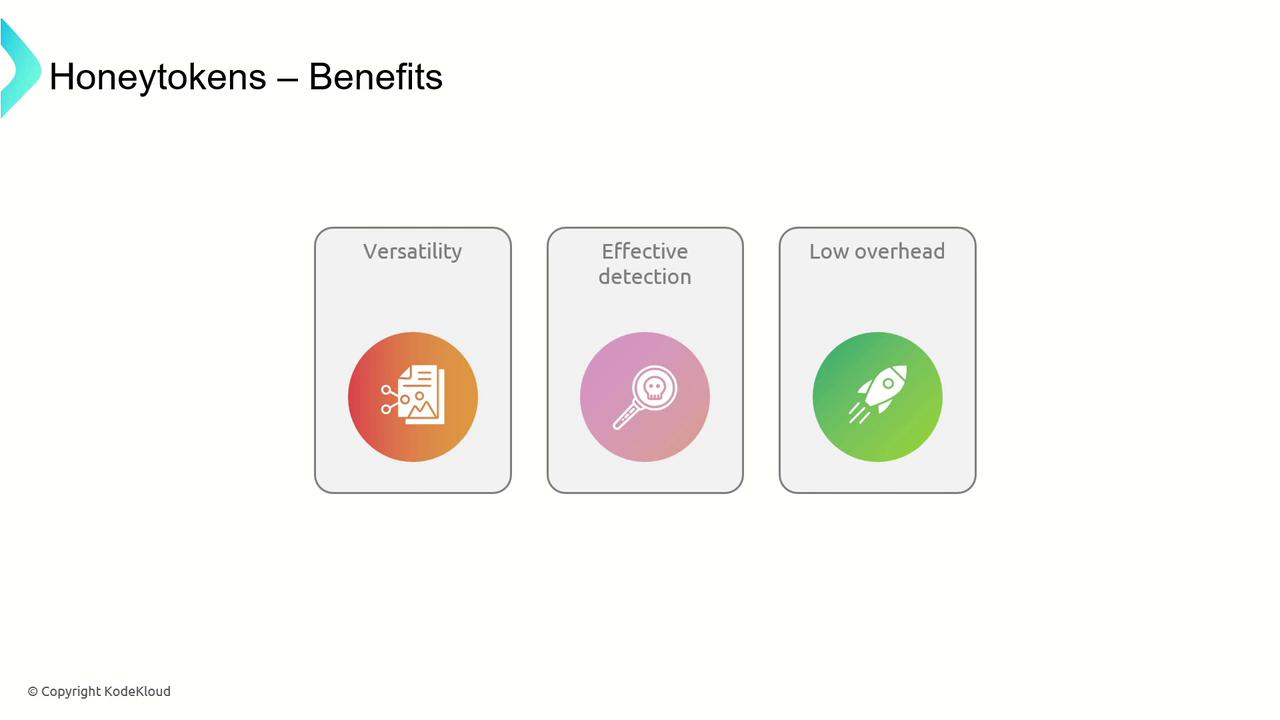
Conclusion
Honeypots, honeynets, honeyfiles, and honeytokens are essential components in a layered cybersecurity strategy. They provide early threat detection, deep insights into attacker behaviors, and contribute significantly to strengthening an organization's security defenses. While not a complete solution on their own, these decoy technologies are valuable for proactive threat intelligence and risk mitigation.
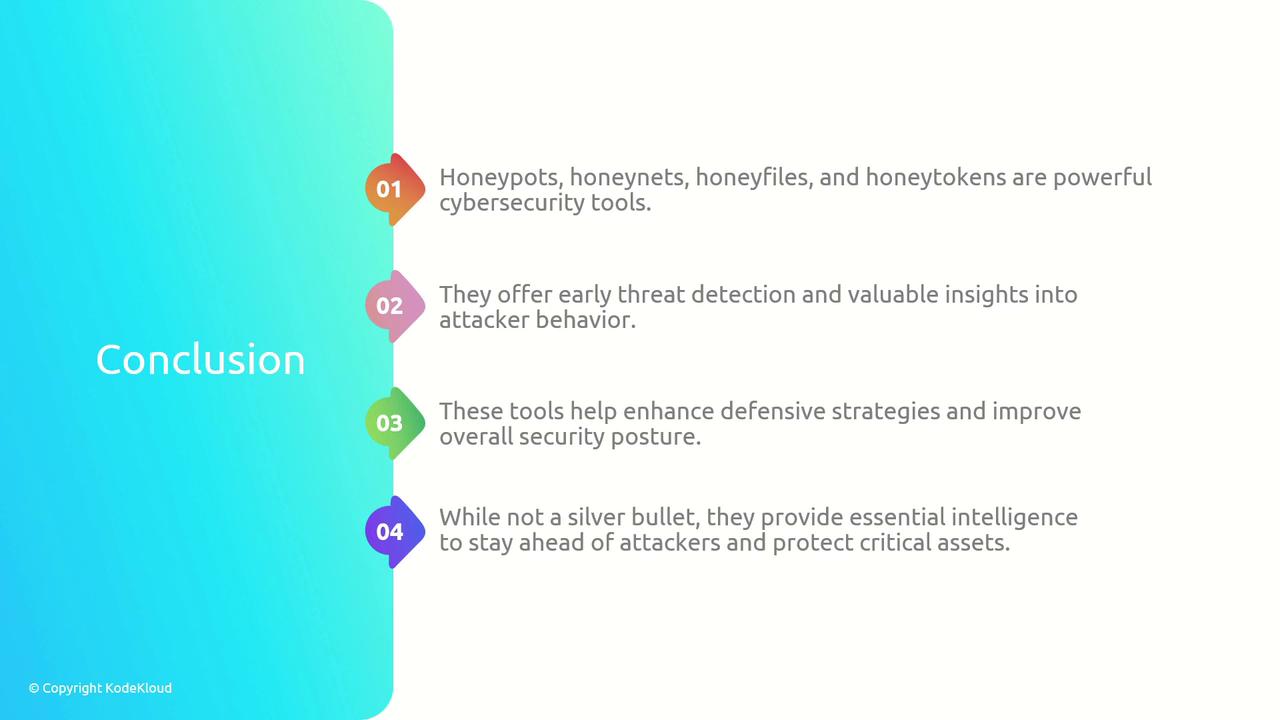
Thank you for reading and stay secure!
Watch Video
Watch video content